site search
online catalog
CIVIL WAR NAVY SEAMAN’S WHITE DUCK TROUSERS OF JOSEPH DUFFY, USS PORT ROYAL 1862-1865, NORTH ATLANTIC BLOCKADING SQUADRON
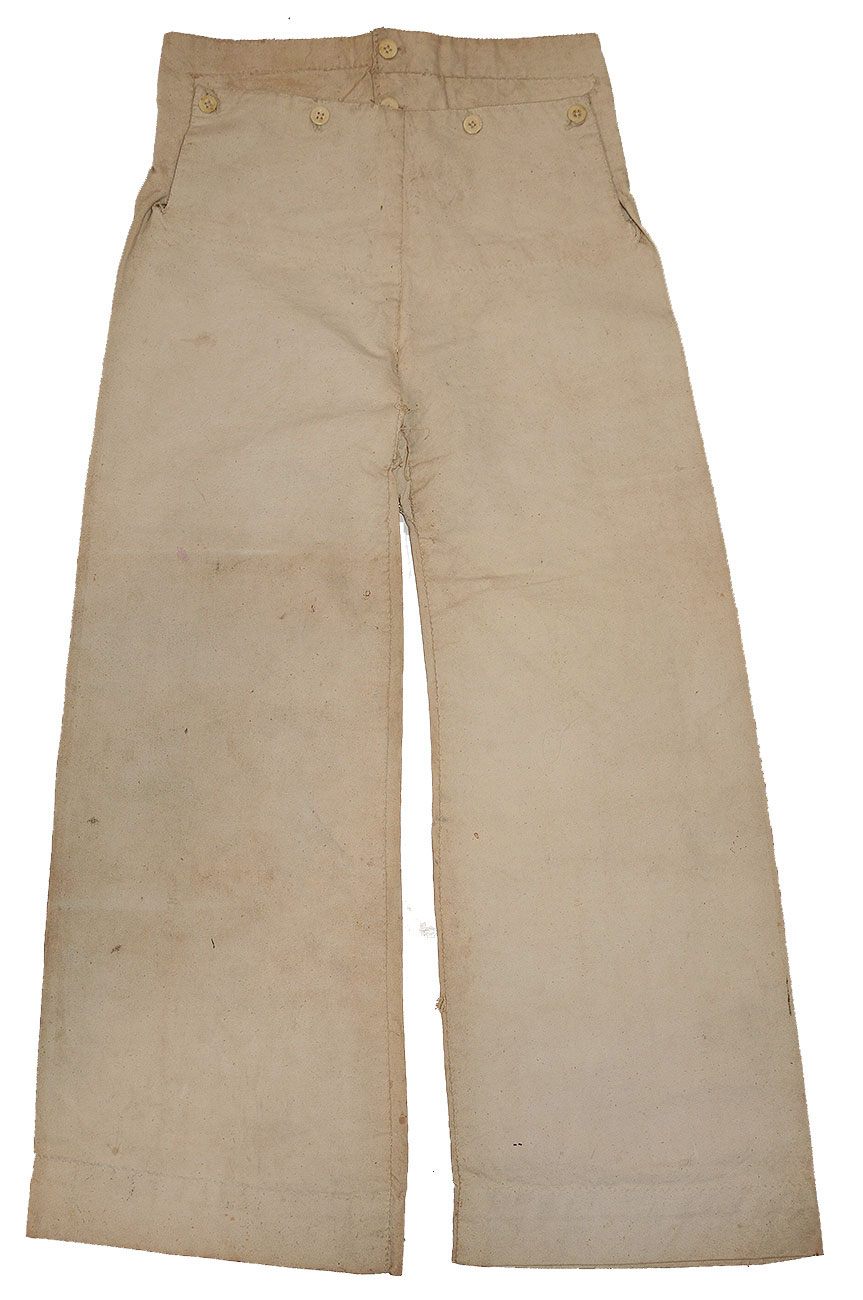
Hover to zoom

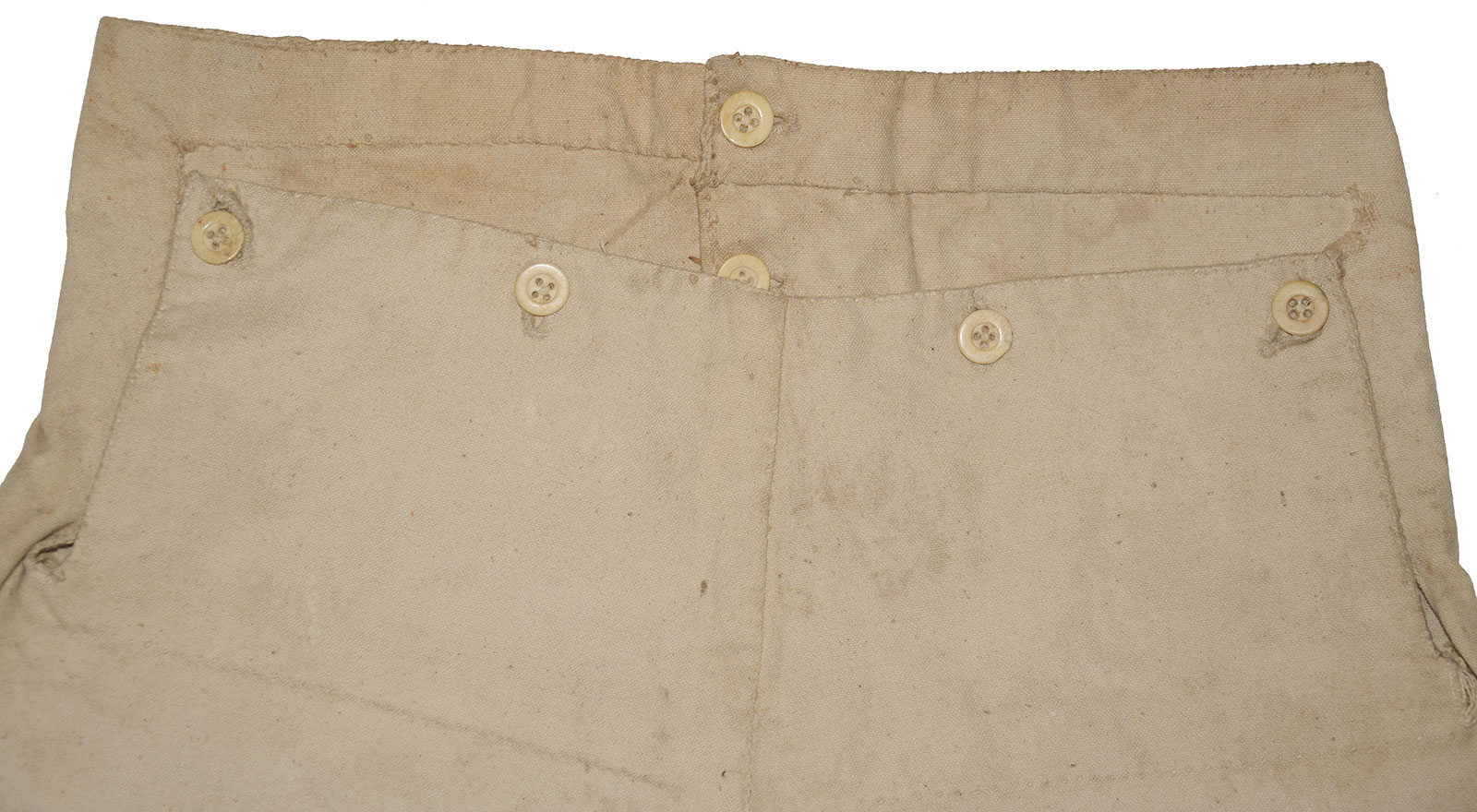
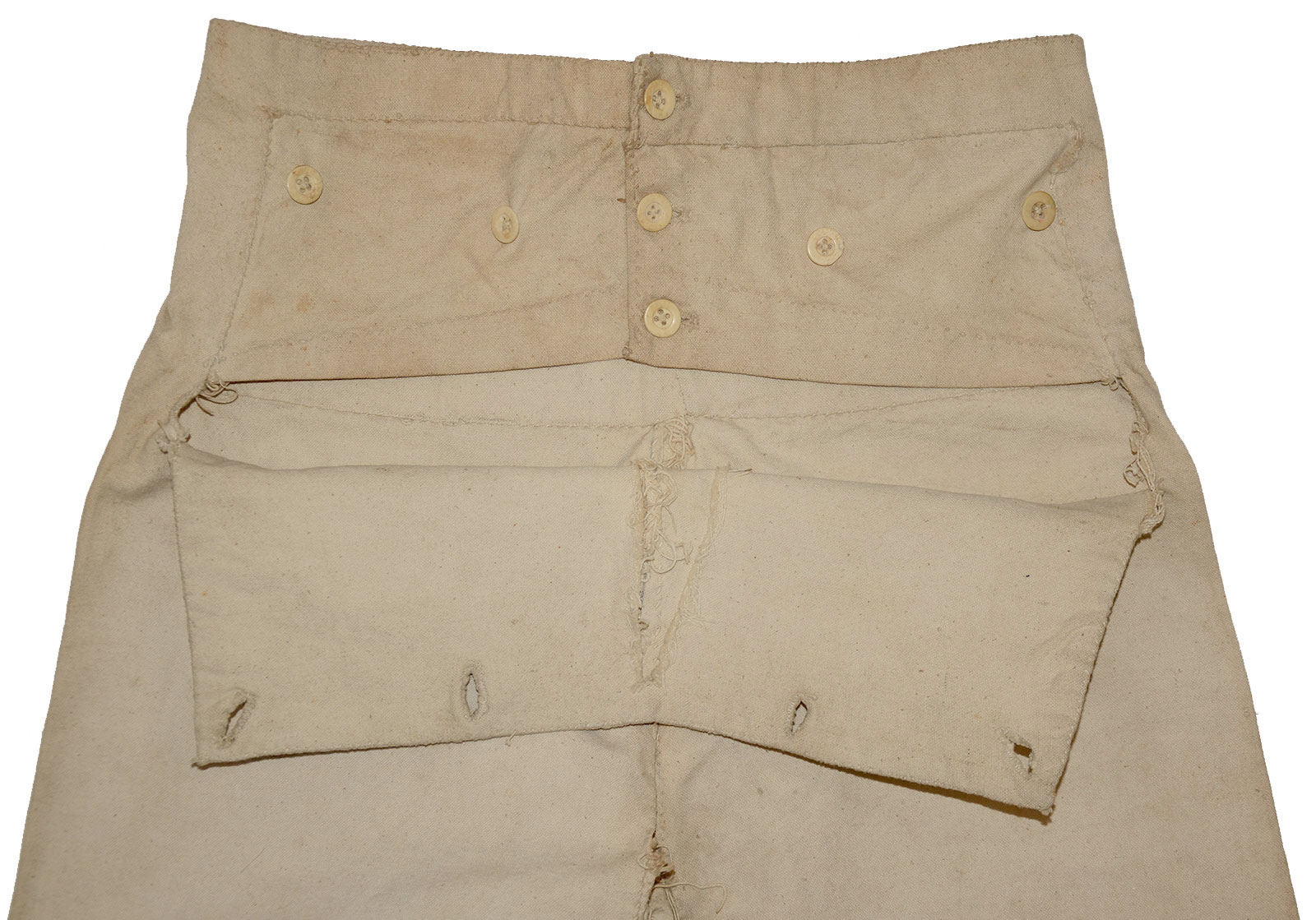
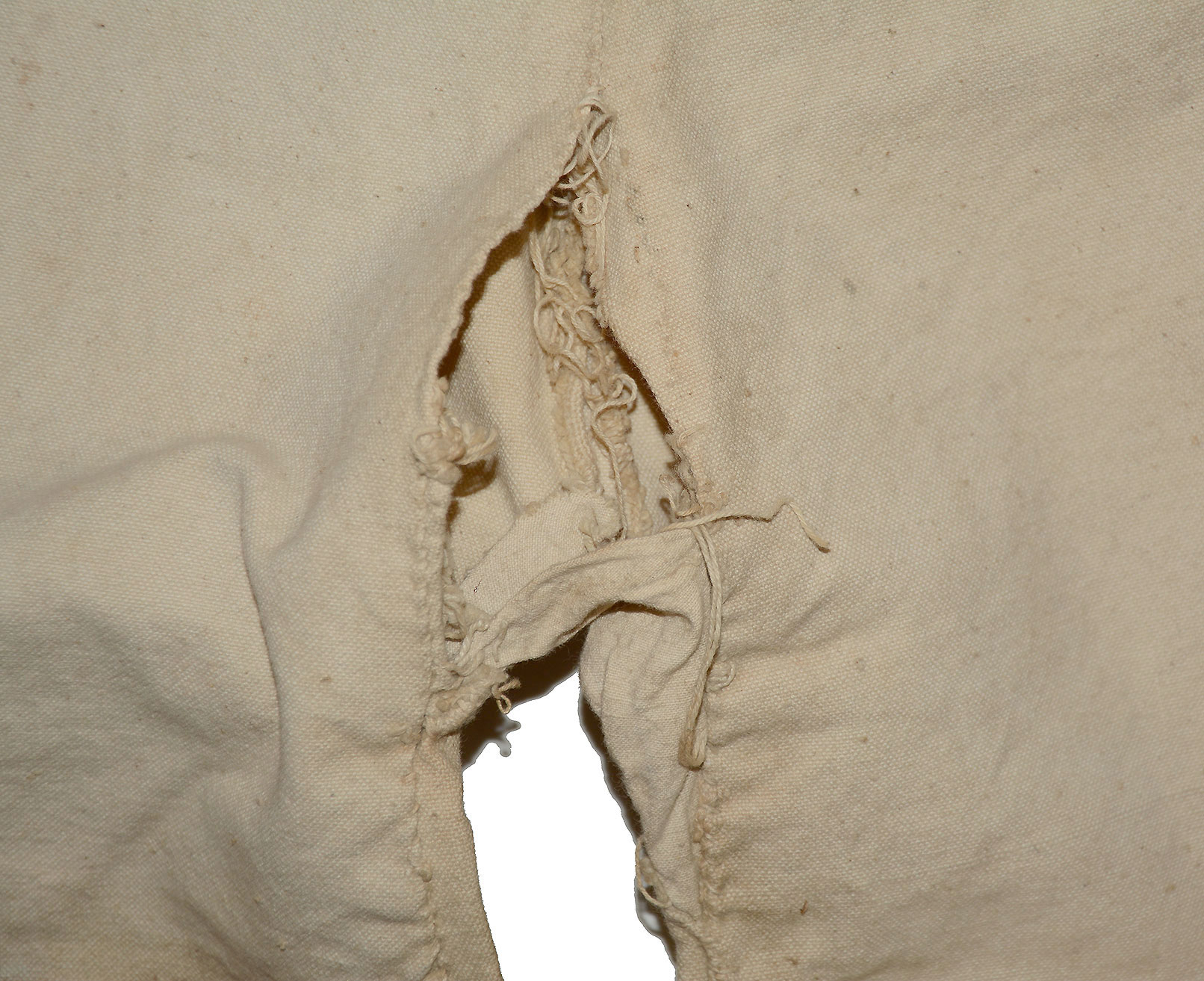
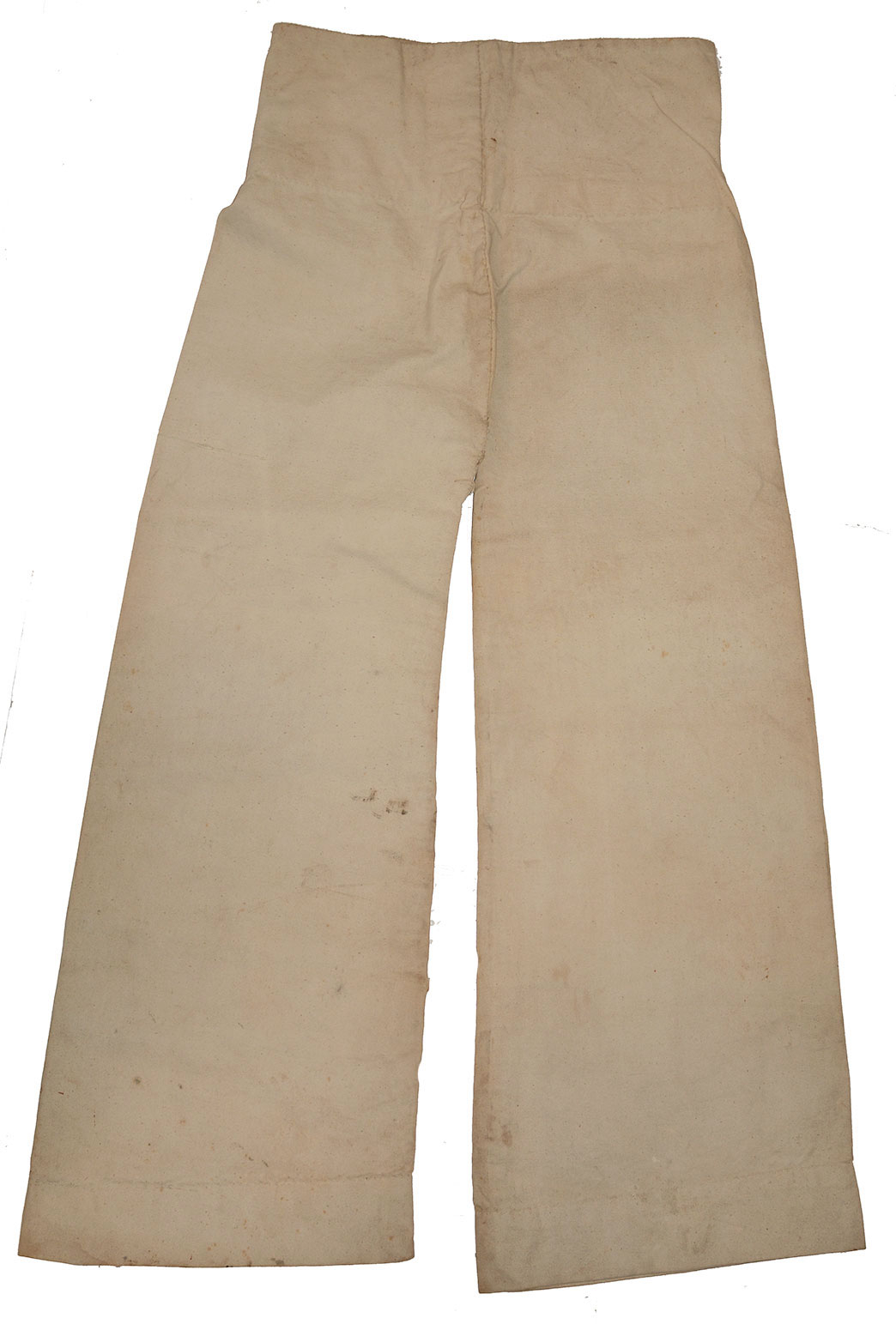
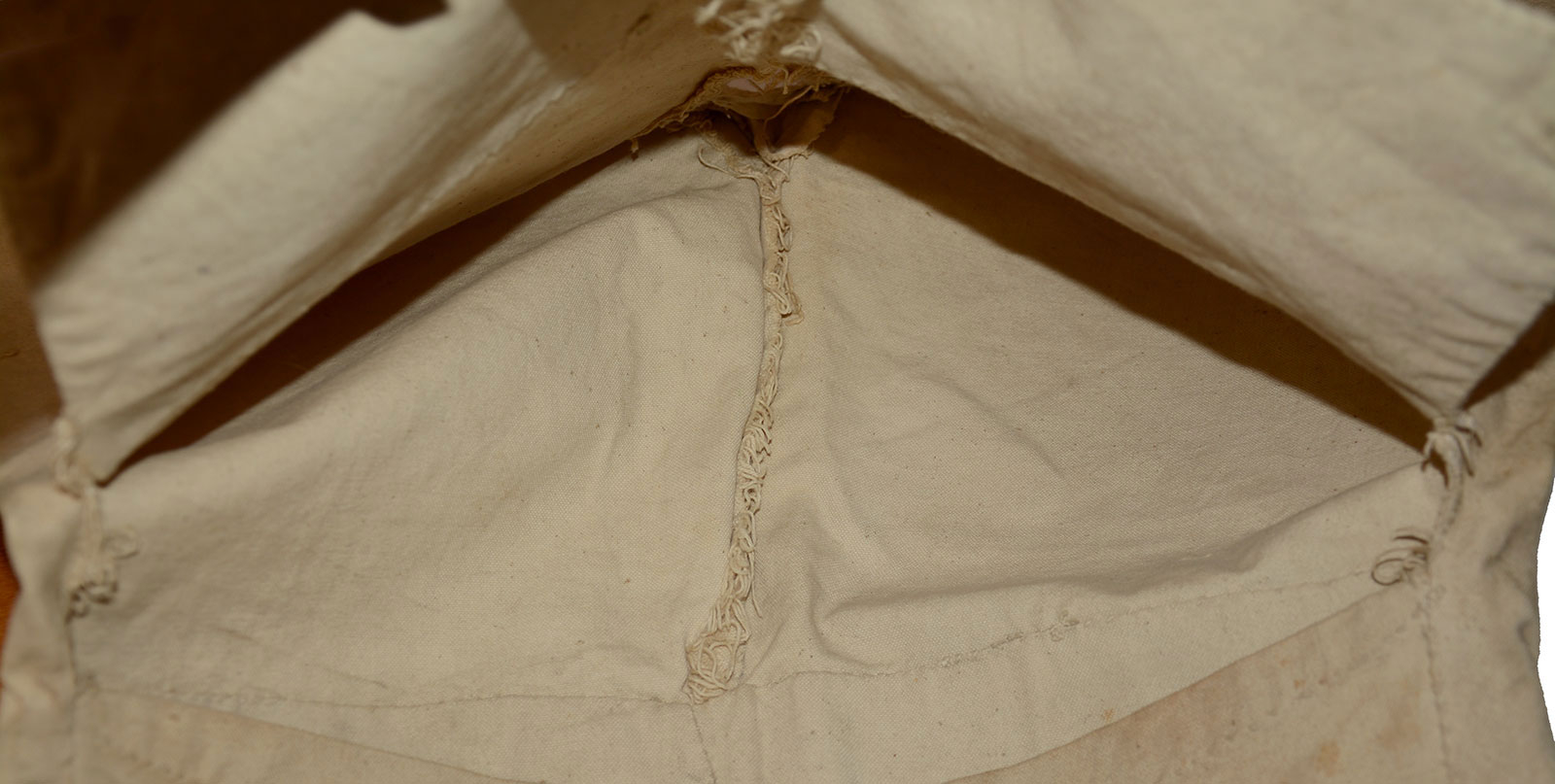
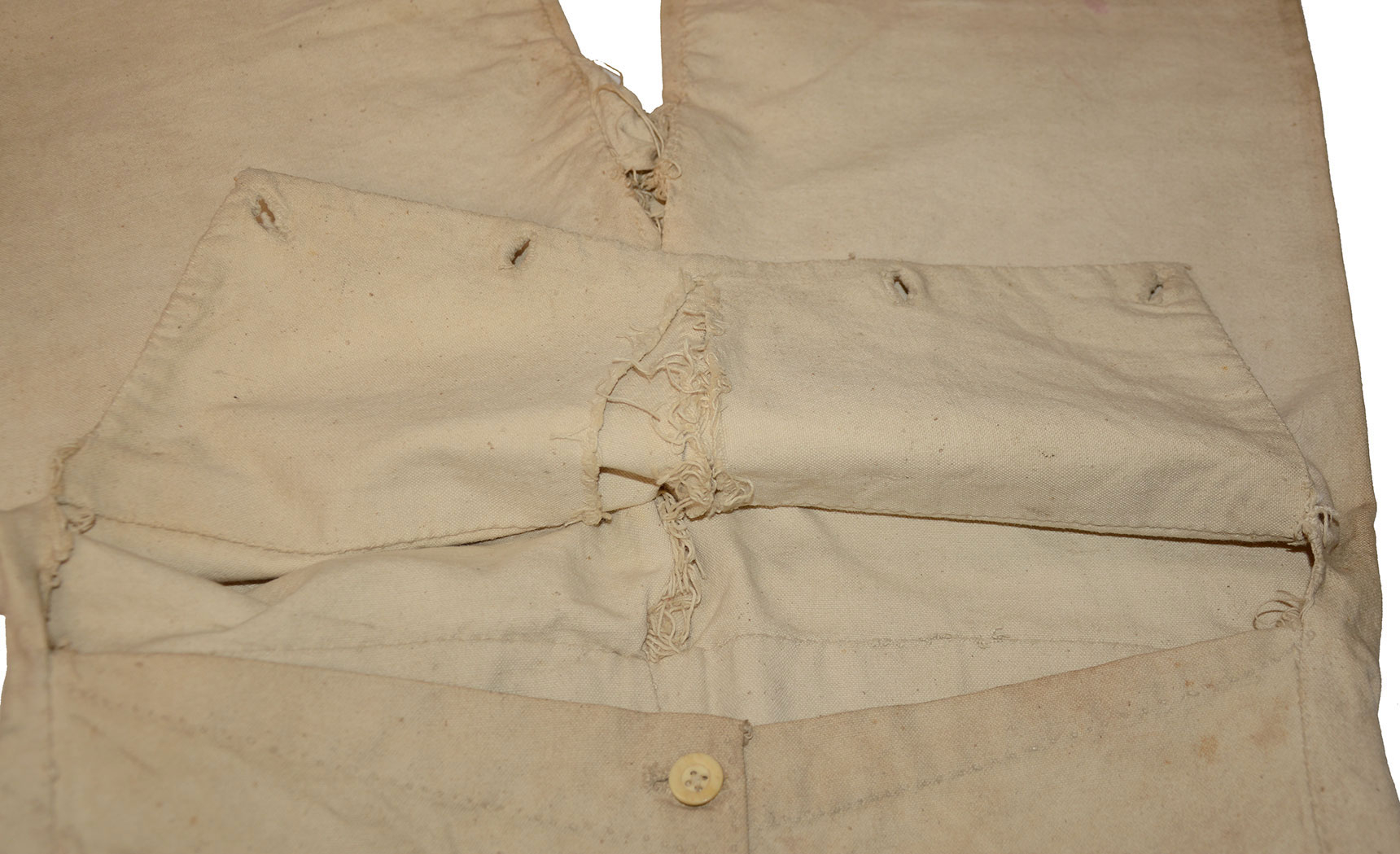
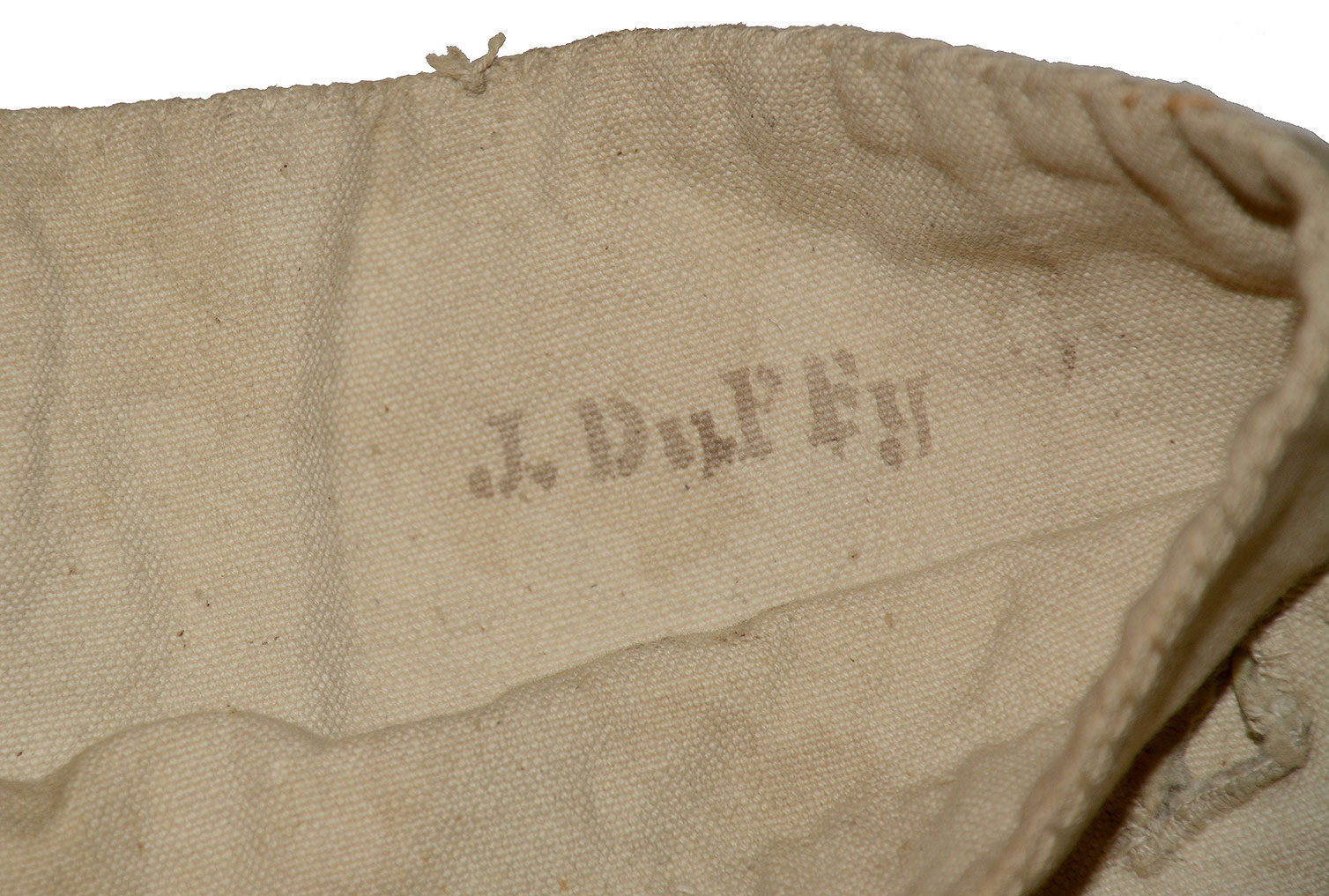
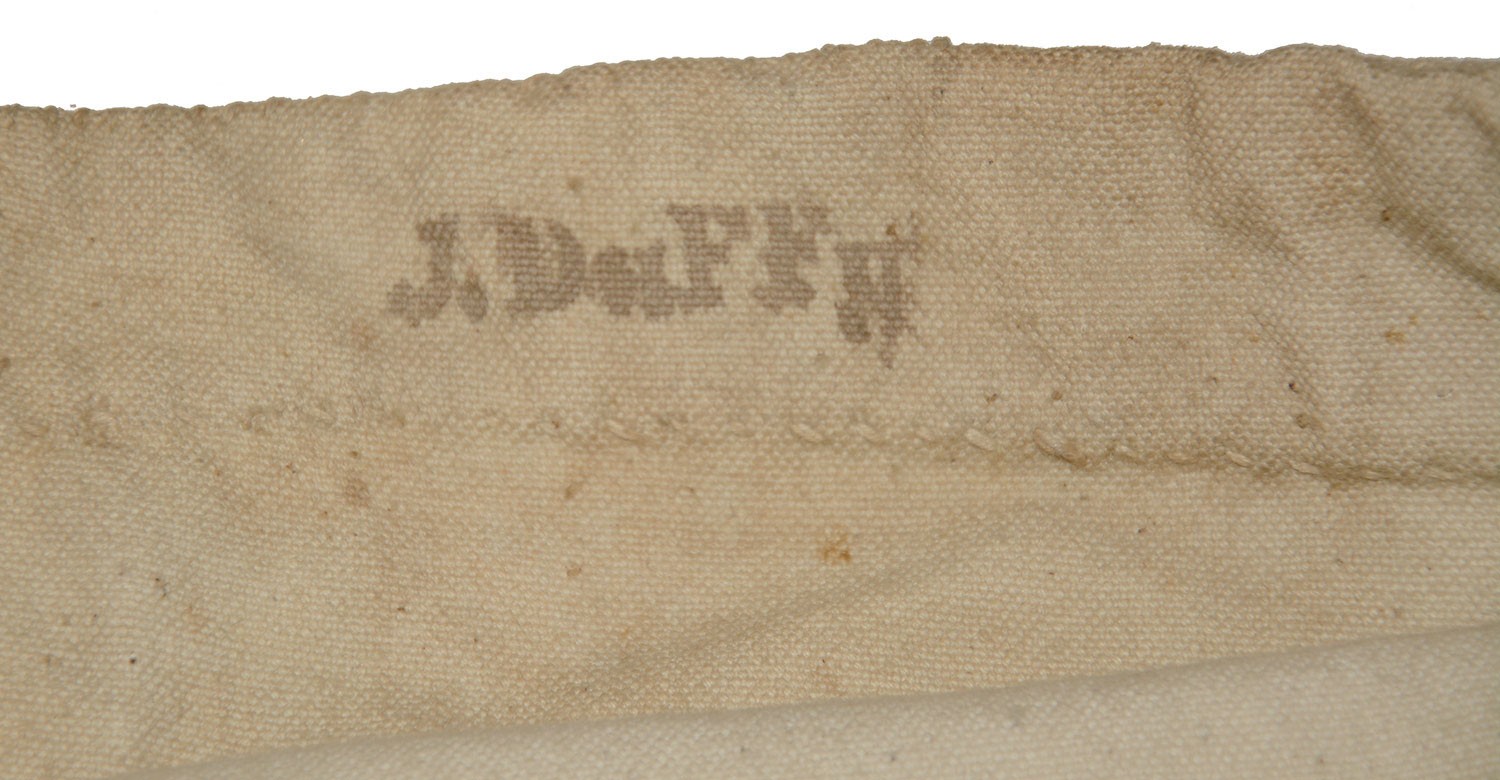
$3,950.00
Quantity Available: 1
Item Code: 1268-667
Shipping: Determined by Method & Location of buyer
To Order:
Call 717-334-0347,
Fax 717-334-5016, or E-mail
Stencil-identified Civil War US Navy white duck trousers of Ordinary Seaman Joseph Duffy, formerly on display at the Texas Civil War Museum. The Navy played a key role in the Civil War, enforcing the blockade, countering Confederate commerce raiders, supporting landing operations, taking part in numerous coastal and river actions, with the securing the Mississippi, effectively splitting the Confederacy, perhaps the most famous contribution. As a smaller branch of service, though, Civil War navy material has always been tough to find and, as with the army, uniforms of the enlisted men were those least likely to be preserved. These would be a key part of any Civil War US Navy collection or display and would look great shown beside representative navy small arms and accoutrements, as well as other uniform items.
These are typical, but scarce, made of heavy duck, with wide legs and fall front. The origin of the wide legs is variously given, but likely is from the increased freedom of movement they allowed, a good thing in climbing rigging, and in ease of rolling up to avoid soggy and heavy clothing. The fall front has three white bone buttons down the front of waist band, which is about 5 inches tall and reinforced inside along the top and bottom. The flap has four more buttons, also white bone, along the top edge. The fall is 6-inches tall at center. seven buttons, three vertical on the wide waistband and four horizontal along the upper edge of the flap or fall. The legs measure about 41-inches along outside edge and 29-inches on the inside seam. The legs measure about 11-inches at the knee and 12-1/2 inches at the cuff giving them a slight flare. The trousers are solid and have good color with only minor thin stains. The only damage we see is that the seam has torn for about 4-inches in the crotch, but no fabric seems to be missing.
The name “J. Duffy,” is stenciled twice, inside the rear left and front left. He borrowed both upper and lower-case letter stencils to produce a very folky looking “J. DuFFy” in now brown ink. We include the short file from the museum on Joseph Duffy, who enlisted in the US Navy at Brooklyn on April 25, 1862, was taken on board the receiving ship USS North Carolina and was then assigned as an Ordinary Seaman to the USS Port Royal by his own account and also to the USS John P. Jackson by a note in his pension file. He was discharged at New Orleans on May 5, 1865, and in postwar years worked at the Brooklyn Navy Yard, though with perhaps an occasional sea voyage mixed in- he alludes to a stay in San Francisco in 1870-71 in one document. He seems to have been born in Ireland in 1834, though that date changes by some census reckonings, and his birthplace is occasionally given as England and even New York. He married in 1860, reckoning from the 1900 census that has him married for 40 years. The 1880 census has him working at the Brooklyn Navy Yard, married, with five children ages 1 to 15. He seems to have continued working there until about 1912, when he entered the Soldiers and Sailor’s Home in Bath, NY, where he died in 1913. His widow applied for a pension in 1918 noting, “He never settled down until I married him and the only place he worked, on the land, was in the Brooklyn Navy Yard.”
We quote the histories of the Port Royal and J.P. Jackson from the US Navy History and Command Center:
“Port Royal, a wooden, double-ended, side wheel gunboat, was launched at New York on 17 January 1862 by Thomas Stock, and commissioned at New York Navy Yard, on 26 April 1862. Departing New York 4 May, Port Royal steamed to Hampton Roads to join the North Atlantic Blockading Squadron in supporting Gen. George B. McClellan's drive up the peninsula toward Richmond. She engaged Confederate batteries at Sewell's Point, Va., on 8 May and a week later participated in the attack on Fort Darling, Drury's Bluff, on the James below the southern capital. After Confederate Gen. Robert E. Lee's seven day campaign turned back McClellan's thrust, Port Royal shifted operations to the North Carolina Sounds. She took part in a reconnaissance of the Neuse River, N.C. and attacked Kingston, from 12-16 December. The spring of 1863 found her operating along the Florida coast. On 20 April, a landing party from the ship raided Apalachicola, Fla., capturing cotton and ordnance. On 24 May a boat expedition captured sloop Fashion laden with cotton in the same area. The Union party also burned a ship repair facility at Devil's Elbow and destroyed a barge. In the ensuing months Port Royal continued to patrol the Confederate coast. In August 1864, she served with Rear Adm. David G. Farragut during the operations in Mobile Bay, Ala. Port Royal then continued patrol duty through the end of the Civil War. Decommissioned on 23 May 1866, she was sold at Boston, Mass., on 3 October 1866.”
John P. Jackson was built at Brooklyn, N.Y., in 1860 and purchased by the Navy at Newark, N.J., from Jersey City Ferry Co. 6 November 1861. She commissioned at New York Navy Yard 14 February 1862, Lt. Selim E. Woodworth in command… ordered to Key West 10 February to serve as one of the steamers in Comdr. David D. Porter's mother flotilla. On 30 March she arrived Ship Island from Key West as Flag Officer Farragut assembled vessels for his campaign against New Orleans. While Farragut labored to move his deep-draft, sea-going ships across the bar into the Mississippi, John P. Jackson was part of the task force which secured Pass Christian, Miss., 4 April. During the operation she joined New London and Hatteras in driving off Confederate steamers Carondelet, Pamlico, and Oregon as they attempted to prevent the Union landing which wrested the area around Biloxi, Miss., from the South. The same day John P. Jackson captured steamer P. C. Wallis with a cargo of naval stores.
She next escorted General Butler's occupation troop ships to the Mississippi passes while towing Army transport Great Republic. Leaving the Army vessels at the mouth of the Mississippi to await the outcome of the impending naval effort against New Orleans, John P. Jackson joined the mortar boats for the intense bombardment of Forts Philip and Jackson. The canonade began 18 April and lasted until Farragut's ships had safely passed the Confederate batteries 6 days later dooming the Southern riverside strongholds and the metropolis which they had fought to protect. John P. Jackson again supported Farragut when lie ran the gauntlet at Vicksburg almost 2 months later to meet Flag Officer Davis, who had battled south along the Mississippi valley. Braving the fire of skillfully used Vicksburg cannons, Porter's flotilla peppered the Southern emplacements with shell, grape, and shrapnel throughout the daring dash. During the fray John P. Jackson was hit twice by 7-inch rifle projectiles, leaving her without power and causing other serious damage. Moments later Clifton, coming to her aid with a towline, was struck in her starboard boiler; seven men were killed by scalding steam. John P. Jackson quickly lowered her boats to save a number of other men who had been forced overboard by the steam.
After repairs at New Orleans, John P. Jackson was ordered to Mississippi Sound 30 September for reconnaissance work; and she served there throughout the remainder of the war. Fire broke out in her engineering spaces 8 October, but efficient and courageous damage control action extinguished the blaze and saved the ship. She captured sloop Young Gustave in Mississippi Sound 21 October, and diligently performed blockade duty in the months that followed. On 12 September 1863 she cooperated with Genessee and Calhoun in chasing steamer Fanny ashore where she was burned to prevent her falling into Union hands. The next day the same team engaged Confederate steamer Jeff Davis, forcing her to withdraw to the shelter of batteries at Grant's Pass. The Union vessels then silenced the Grant's Pass guns. John P. Jackson overhauled and took schooner Syrena bound from Biloxi to Pascagoula 21 October. Admiral Farragut's next major objective was Mobile Bay. John P. Jackson was on hand at the outset of the campaign 16 February 1864 when she towed three schooners into position for the bombardment of Fort Powell and then joined in the cannonade. For the next 6 months she operated from New Orleans supporting the operations which culminated 5 August in Admiral Farragut's stirring victory. John P. Jackson captured schooner Medora in Mississippi Sound 8 December 1864, and continued to serve in the West Gulf Blockading Squadron until after the end of the war. She departed Pensacola Navy Yard 26 July 1865 and 2 days later arrived New Orleans, where she decommissioned 5 September. She was sold at public auction in New Orleans to Marcy, Maury & Co. 27 September 1865. She was redocumented J. P. Jackson 3 October 1865 and was later abandoned in 1871.
This is a very scarce set of Civil War US Navy seaman’s trousers that display very, very well and merit a prominent place in any Civil War navy collection. [sr] [ph:L]
~~~~~~~~~~~~~~~~~~~~~~~~~~~~~~~~~~~
THIS ITEM, AS WITH ALL OTHER ITEMS AVAILABLE ON OUR WEB SITE,
MAY BE PURCHASED THROUGH OUR LAYAWAY PROGRAM.
CLICK HERE FOR OUR POLICIES AND TERMS.
THANK YOU!
Inquire About CIVIL WAR NAVY SEAMAN’S WHITE DUCK TROUSERS OF JOSEPH DUFFY, USS PORT ROYAL 1862-1865, NORTH ATLANTIC BLOCKADING SQUADRON
Most Popular
Historical Firearms Stolen From The National Civil War Museum In Harrisburg, Pa »
Theft From Gravesite Of Gen. John Reynolds »
Selection Of Unframed Prints By Don Troiani »
Fine Condition Brass Infantry Bugle Insignia »
featured item
US MARINE CORPS OFFICER’S ENGLISH MADE MAMALUKE WITH IVORY GRIP
Manufactured: England Maker: Unmarked Year: C1820-25 Model: Mamaluke Size: 35.8 inch blade, 1.21 wide Condition: Excellent+ Tri-color blade - blue, gold and "white" of flat design. Ship's Mast, American Eagle, Standing Indian figure and… (870-76). Learn More »
site search
Upcoming Events
The shop is currently closed so that we may conduct our annual inventory. We are available by phone… Learn More »


